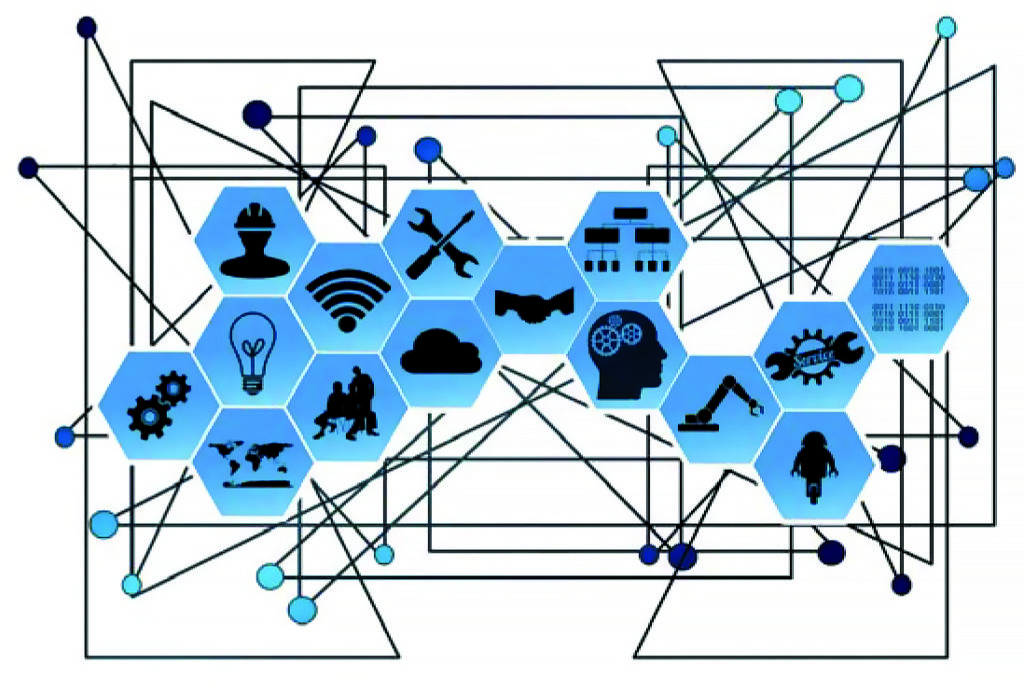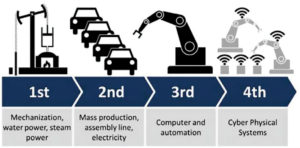
IIoT builds connectivity with devices and users
Processing/manufacturing companies are under extreme pressure to be profitable throughout all economic conditions. In the global economy, holding an advantaged position is coveted. Companies find themselves working under Industry or Business 4.0, which is the ongoing automation of data exchange, supply systems, processing operations, and distribution networks.

Modern industry/technology progressions
Industry 4.0 is about connectivity between physical devices and the digital world, which is now possible through advanced technologies, IoT, and smart embedded devices.1 For example, IoT is more about the connection from devices to users that increases convenience. Several great examples of “smart” devices include phones, cars, appliances, and even homes.
In contrast, the IIoT is more than connectivity between devices and users; it is focused on moving data and information. The true value of IIoT is uncovering the full visibility of processing and operations data to improve performance and profitability. Collected data has minimal value. Rather, the information and knowledge extracted from the data and effectively applied in decision-making is the true worth. In short, Industry 4.0 is geared to converting data from a liability into an asset.2
Data not used is money left on the table
Today, the greatest disrupter in business is the digitalization transformation. Building on the IoT, digitalization is rapidly becoming the new normal for data management. All processing/manufacturing companies have data-management systems. The industry type and age of assets influences the level and complexity of data systems. Manufacturing operations are deeper into the IIoT than O&G operations. But, industry leaders acknowledge the urgent need to embrace digitalization and IIoT.
Big data, cloud computing, and IIoT
The installation of smart devices and wireless technologies has greatly expanded the volume and velocity of data that can be captured. This sheer volume of collected data has created buzz-words, such as, big data. For example, big data describes the terabytes of data points that can be collected in one day on a modern oil rig or refinery. Cloud computing is the only reasonable means to manage such volumes of data and efficiently share with users. More data provide resource points to analyze for real-time information.
Decision-makers have sought real-time information to capture advantages in raw material supplies and pricing, market changes, equipment/unit monitoring, and other opportunities. Effective management of big data, supported by cloud computing and IIoT, can yield real-time information and enable better decision-making. For example, changing a crude slate to incorporate an opportunity oil dramatically influences a refinery’s earning potential.
What are the benefits of digitalization projects?
All capital projects begin with a cost-to-benefit analysis. Likewise, digitalization/data-management projects are scrutinized to justify resources. Table 1 summarizes the pros and cons for IIoT projects.
Table 1. Benefits and roadblocks to digitalization-IIoT projects.3,4
Pros Cons
Quality control Cybersecurity
Predictive maintenance Legacy equipment
Process/unit optimization Communication/connectivity
Compliance with HSE regulations Training and staff
Data-driven decision-making Integration
In particular, fully utilizing sensor and operations information elevates quality control of products, increases safety performance, and minimizes process or unit upsets. Improved predictive maintenance and equipment-condition monitoring identify opportunities to avoid unscheduled maintenance and unit downtime. With supply-chain and process/inventory information, data-driven decisions can take advantage of changing market conditions and increase profitability.
The ‘cons’
Conversely, IIoT projects present hurdles. Increasing the connectivity of data flow between field operations and financial centers does open the possibility of hacking or data corruption. For a cyber breach, recovery plans are more critical than any prevention initiatives. Especially for a cyberattack, the issue is not if it will occur; rather, it is how fast the organization can recover.
Legacy equipment is a tougher issue. Especially for processing facilities, the age of the equipment will vary depending on the process unit and plant site. Installing IIoT devices and software can raise other problems. In some cases, legacy software and hardware may require complete replacement of instrumentation, sensors, field devices, and data-management hardware and software— thus significantly adding more to total project cost.
New devices, software, and operating systems will create new jobs on- and offsite. Also, they will change the roles and responsibilities of operators and data users. Education and support training for these processing changes and monitoring/data-management systems are vital for ongoing success. The IIoT is a dynamic and transformative wave, and it requires support by senior executives.
Look before leaping into IIoT
Preparation is essential for any major undertaking. The same applies to IIoT projects. Some areas to consider before jumping into any IIoT project are:5
• Making digitalization a priority for senior executives
• Driving a culture of innovation and adoption
• Investing in human capital and development that promote new, digital thinking
• Updating the company’s data architecture
• Finding opportunities to deepen collaboration and understanding of data-sharing platforms.
The digitalization transformation has begun. Waiting to begin this process is no longer an option. However, clear planning, established goals, and senior-level support will facilitate the transformation to IIoT.
Literature cited
1 Panetta, K., “Gartner Top 10 Strategic Technology Trends for 2018,” Oct. 3, 2017.
2 Wood Mackenzie, “Digitalisation and the race to work smarter,” 2018.
3Radley Corporation, “What is the use of the IIoT?”, white paper, 2018.
4 Red Lion Controls, “Five key elements for effective IIoT Implementation,” white paper, 2018.
5 Loustalot, K., “The next generation: Taking safety performance to a higher level”, Rice Global E&C Forum, April 6, 2018.

Recent Comments